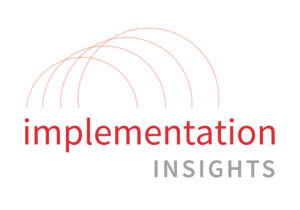
Sophia Mendelsohn, Head of Sustainability, JetBlue Airways
On April 10, JetBlue published a report produced according to the SASB Standard for the Airlines industry.
In this blog, Transportation sector analyst Nashat Moin speaks with Sophia Mendelsohn, Head of Sustainability at JetBlue Airways, to understand JetBlue’s process of implementing SASB standards.
While SASB believes material sustainability information should be disclosed in SEC filings, we recognise that some companies may first use the standards in reports outside of the Form 10-K, and then may elect to incorporate them into their SEC filings.
When SASB standards are codified in Q1 2018, we expect more companies to disclose via SASB standards in SEC filings.
Why did JetBlue decide to use SASB standards to communicate with investors?
As a publicly traded company, we have a duty to do what’s best for our investors. The questions that always came up as we compiled our past sustainability reports were, are investors really looking at or interested in the “feel good” CSR report? Do they care about how we are inspiring humanity as much as they care about cost-cutting initiatives? The SASB standard for the airline industry offered a reporting solution for us, as it allowed us to better target investors by focusing on the ESG metrics material to our industry, rather than reporting on broad metrics that are less applicable to aviation.
Reporting on material ESG considerations addresses investor interests; gets ahead of regulatory developments, and strengthens financial performance (further linking sustainability to strategy). Sustainability is planning now for the future, and real solutions require us to think beyond quarter-to-quarter financial impact and move towards long-term planning.
What were the challenges of using SASB standards for the first time?
The biggest challenge was getting internal teams familiar with the standards and comfortable with the idea of voluntary reporting. The general sentiment is typically to not report unless we have to. However, sustainability efforts have a valuable impact on our business, and it’s up to us to report the information that affects our long-term business plans in a way that is visible and of interest to investors.
How did you overcome these challenges?
We took care and time making the many departments and key internal stakeholders aware of the reporting process, why we are reporting according to SASB standards, and how doing so benefits JetBlue. We worked with relevant departments throughout the organisation, drawing on them for information while also balancing and responding to any concerns on their end. It all came down to engagement and creating a space for collaboration. Having key high level individuals in support of the report was a key driver in its success—knowing there is buy-in from the top creates a sense of security in moving forward.
How were you able to compile the sustainability information in a timely matter, given JetBlue’s existing disclosure processes for sustainability and financial information?
Before diving into the data gathering process, we conducted a gap analysis between the SASB technical protocol and what we were currently reporting on. In evaluating the gaps in data, we determined which topics were going to be the most difficult to compile information on versus those that were easily captured. This allowed us to prioritise and reach out to relevant groups accordingly. For example, as we had previously reported according to GRI standards and submitted to CDP in 2015, we had a great deal of the environmental footprint data, or at least a methodology in place for how to capture such information for 2016.
Much of the work involved gathering up to date figures on metrics we already tracked. For information we did not have on-hand from previous reporting mechanisms, we worked closely with the teams that held that data to craft a management approach and answer all technical protocol guidance. The difficulty here was that much of the data required waiting for year-end reporting to be finalized to ensure all figures were in alignment. However, this wasn’t a significant hurdle for us at this point, as we released our SASB report as a separate white-paper document.
Who were the internal players that were involved in the process?
The relevant departments in each of the four disclosure topics in the SASB Airline Standard included:
- Environmental footprint: Sustainability and fuel teams
- Labor Relations: Crewmember relations team
- Safety: Safety team
- Competitive Behaviour: Government affairs and legal teams
Beyond the data gathering phase (which relied heavily on these teams), we also worked closely with our C-Suite, financial reporting and investor relation teams.
To what extent were service providers involved in the process (e.g., data verification, outside counsel, etc.)?
We worked with iCompli Sustainability in guiding the vision of the report, aligning data with the SASB technical protocol, and developing concise narratives to support the SASB disclosures for the Airline industry. iCompli are SASB experts; they were part of the original SASB Advisory Partner program and offer a range of SASB services, including gap analysis of your Sustainability Reporting to the SASB standards for each industry, peer benchmarking, materiality assessment and implementation guidance.
What advice do you have for companies that are beginning the process of integrating SASB standards into their disclosure processes?
I suggest starting discussions with the relevant internal teams to understand interest, find allies, and preemptively address concerns. It’s important to understand potential concerns, and to propose solutions to mitigate these concerns upfront. More specifically, my suggestions are to:
- Find high level support within your company and leverage them in gaining meetings with key internal players and verifying the value of reporting.
- Build a strong internal case for why you are interested in reporting according to SASB standards. We had a variety of convincing reasons that helped to assure internal teams of the value of doing so.
- Provide a platform for teams to talk about their work. Just as some teams or individuals may be weary of a new reporting mechanism, others are just as (if not more) excited to have their work acknowledged and tied to long-term strategy and performance. Engage the excitement and leverage that sentiment to encourage greater support.
- Conduct a gap analysis to determine how much of a lift the reporting process will be. If you are already reporting or gathering much of the information required by the technical protocol, it may less of a time intensive process than initially anticipated.
For more context, watch Sophia Mendelsohn share her SASB story on a webinar with 3BL.
For more insight on how to use SASB standards, please read SASB’s Implementation Guide for Companies.
